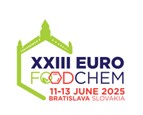Scientific journal
Journal of Food and Nutrition Research
Summary No. 3 / 2021
Liu, H. – Huang, Z. – Lyu, L. – Fan, S. – Wu, W. – Li, W.
Effect of ferulic acid and natamycin treatments on quality and reactive oxygen species metabolism of postharvest blackberry
Journal of Food and Nutrition Research, 60, 2021, No. 3, s. 236-243
Wenlong Wu, Jiangsu Key Laboratory for the Research and Utilization of Plant Resources, Institute of Botany, Jiangsu Province and Chinese Academy of Sciences, 1 Qianhuhou Village, Nanjing 210014, China. E-mail: 1964wwl@163.com.
Weilin Li, College of Forestry, Nanjing Forestry University, 159 Longpan Road, Nanjing 210037, China. E-mail: wlli@njfu.edu.cn
Received 11 May 2021; 1st revised 23 June 2021; accepted 25 June 2021; published online 6 September 2021.
Summary: A series of physiological changes takes place in the postharvest blackberry (Rubus sp.) fruit. We investigated the effects of ferulic acid and natamycin on quality and antioxidant capacity in the fruit. The results showed that the nutrients consumption was delayed by their action. The skin and flesh of fruit had changed after treatments as seen by microstructural observation. The combined treatment group had smooth skins and clear flesh folds, while the other groups showed varying levels of disruption. The single and combined treatments increased the relative electrolyte leakage and the malondialdehyde content of the fruit. The content of reactive oxygen species increased with time, including the superoxide radical and hydrogen peroxide, this increase being the lowest in the combined treatment group. The combined treatment significantly increased the superoxide dismutase, catalase and peroxidase activities, and also reduced cell membrane damage, which causes the postharvest caducity of the blackberry fruit, thereby increasing its shelf life and maintaining its quality. This study provides
Keywords: ferulic acid; natamycin; blackberry; quality; reactive oxygen species
Download:
(pdf, 1.09 Mb, 1727x)










